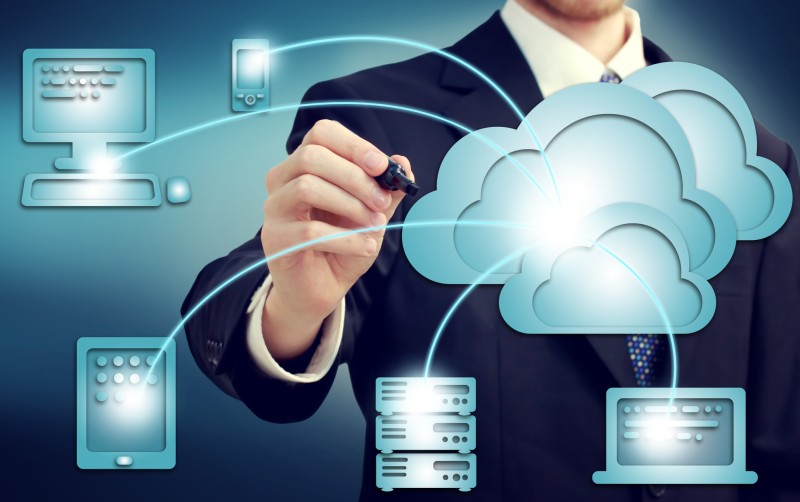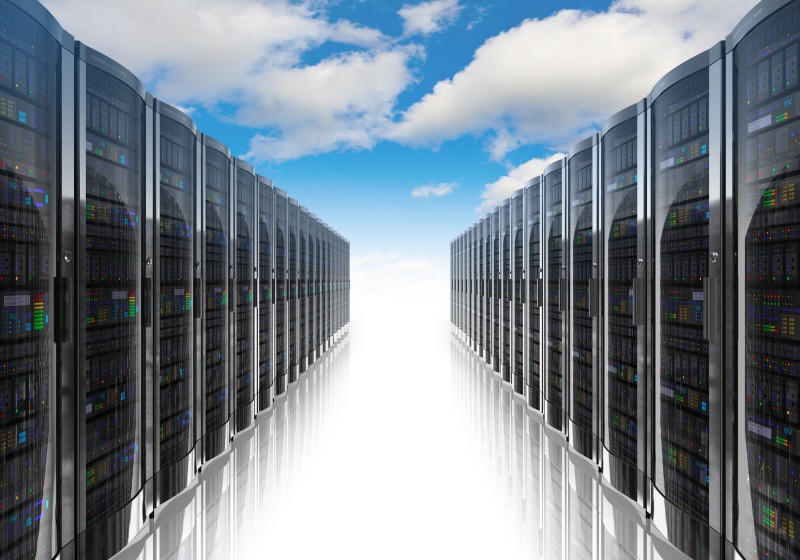Did you know that people use 36 cloud-based services per day on average and that the cloud computing industry will reach $150 billion by the end of 2020? (source: techjury)

Maybe you haven’t realized yet that some of the most popular services and software that you use everyday are part of a Cloud Computing infrastructure.
Some examples include your online email service (such as Gmail), online storage/backup service (such as OneDrive, Dropbox, Google Drive etc), social media sites such as Facebook, Instagram, online communication systems etc, all these are powered by Cloud Computing technologies.
But many people don’t know the specifics of the cloud. All of us use the “Cloud” in some way or another without thinking about the pros and cons of the cloud computing trend.
In this article we’ll try our best to give you an overview of Cloud Computing along with its advantages and disadvantages so that you will leave from here as a more “informed individual” about this popular technology 😊
What Is Cloud Computing?
To better understand cloud computing, a good starting point is to make an analogy with your personal computer or laptop device.
Your home computer (be it desktop or laptop) contains 3 main categories of hardware components: Central Processing Unit (CPU), memory (RAM) and permanent storage (hard disk).
These components work in synergy to allow you to run applications and software on the computer.
Now, the Cloud Computing concept takes all the above hardware or software components and puts them on big data centers connected to the Internet.

So, in other words, imagine a big computer entity (or clusters of computers as shown above) located in big data centers which share their computing, storage, software resources etc to many customers via the Internet.
Let’s discuss for example the cloud storage concept:
Without the cloud, you would have to store your files and data to your home or work computer. But if you needed to access these files from a different location, you couldn’t do that.
Cloud storage for example puts your files in a secure online data center that you can access from anywhere. It doesn’t matter where you create the file, so you and your team can get to the file from a different device and location.
Types of Cloud Computing
You can differentiate among various types based on the deployment model or based on the service offered by the specific cloud type.
Based on Deployment:
You can find three main types of clouds based on deployment (or ownership):
- Public Cloud (most popular)
- Private Cloud
- Hybrid
The Public Cloud model means that the cloud infrastructure is owned by a big cloud provider company (such as Amazon AWS, Google Cloud Platform, Microsoft Azure Cloud etc) which rents parts of this huge computing infrastructure to individuals or businesses. The resources of a Public Cloud are accessible from anywhere in the world via the Internet.
On the other hand, a Private Cloud is deployed on-premises and owned by a business or organization for sharing computing resources within the company. This type is better for businesses or groups who want to have more control over their files and data. You need to operate the cloud within your organization, which will make it more secure.
In the middle ground, we have the Hybrid Cloud model. A hybrid cloud offers some of the security benefits of a private cloud, but you can also use an outside public cloud service for some other needs and resources. You can combine a private and public cloud to suit your company’s needs.
Based on the Service:
Cloud Computing can also be categorized based on the service offered. There are mainly 3 types (although there are more):
- IaaS (Infrastructure as a Service)
- SaaS (Software as a Service)
- PaaS (Platform as a Service)
IaaS offers virtual machines (computers) which include computing power, storage, RAM etc in order for you to install an Operating System (Windows, Linux etc) and other software applications. This is like having a personal computer or server on the cloud.
SaaS offers a Web based software service such as an online accounting tool, online CRM software, email web service etc.
PaaS offers a platform for application development (execution, database, development tools etc).
Let’s now discuss some of the main Pros and Cons of Cloud Computing:
Pros of Cloud Computing
Cloud computing has many advantages, including the following.
Accessible from anywhere
One of the biggest benefits of cloud computing is that you can get to your files, data, service etc from anywhere in the world.
You don’t have to connect to your local on-premises servers or local software application to do your job. If you need to access something after you leave work, that won’t be a problem.
And if someone leaves your company, others can still access the work the former employee did. Company projects and documents can all go in one place. Then, you can grant permission to the appropriate persons for data access.
Don’t need to run your own infrastructure
If you are a huge company with your own manned IT department, then having your own computing infrastructure might not be a problem.
However, for the 95% of all other cases, running and managing your own IT infrastructure (servers, databases, network, software etc) is a big management headache which also incurs a huge cost.
Renting cloud computing resources removes all these headaches and problems. You don’t need to have your own (and expensive) IT experts, you don’t need to upgrade hardware and software etc.
Capacity Size
When you use cloud computing resources and services (such as storage, computing resources etc) you don’t have a cap on how much resources you can use. These online cloud providers can scale you up or down on demand.
Sure, you may need to upgrade to a higher tier once you max out your current plan. However, you can choose a cloud service provider with a very high or unlimited cap.
As long as you have the money to spend, you don’t have to limit yourself with respect to capacity sizing.
Reliability and Redundancy
Cloud services are based on reliable data center technologies which are enterprise grade for providing resilient service and resources.
If you consider for example AWS or Google cloud or Azure cloud as providers, these big players have already implemented hundreds of computing nodes all over the world with redundancy and disaster recovery plans in mind. Your data will be much safer on the cloud (with respect to data loss).
Cons of Cloud Computing
Unfortunately, there are some disadvantages to using cloud computing as we’ll see below.
Recurring Costs
Once you set up the system, you’ll have to pay to keep it running. If you choose a public cloud, this will be through a membership fee or another monthly or annual charge. When running a private cloud, you will need to hire someone to maintain it and update it.
The costs of running a cloud won’t go away after a few months. Unless you have a lot of technical experience, you’ll need to pay for a company or an individual to keep the system. That will add up over time.
Security and Compliance Concerns
Cloud providers are targets of sophisticated hackers. These malicious actors know that cloud providers store and manage the data and information of thousands of people. So, they focus their efforts to attack and steal these data.
Moreover, there are compliance concerns as well. For example, GDPR (European data protection regulation) has strict rules about the location of data stored. There are cases whereby you need to store your data in a European cloud data center to avoid compliance issues.
Needs Good Internet Access
You’ll need a reliable internet connection to access your work or service. Even if the service provider is running fine, your networks also need to be in good condition. An unstable connection can make it hard to use the cloud service.
You don’t need to have the fastest internet speeds, but your internet should be fast enough to download and upload files in seconds. That way, you can maintain your productivity.
Limited Control
For “control freak” engineers this will be a big issue. You need to understand that you will not have much control of your IT infrastructure if you move to the cloud.
Switch to Cloud Computing or Not
Cloud computing has been around for a few decades now and it keeps getting bigger with more services developed over time.
In my opinion, its advantages outweigh the few disadvantages, and especially with more competition coming in the market, reduced prices are inevitable.
Switching to cloud computing services will let you free in running your business with focus on the important business aspects first, rather than dealing with time-consuming administration and troubleshooting tasks that arise when you have your own on-premise IT infrastructure.
Leave a Reply